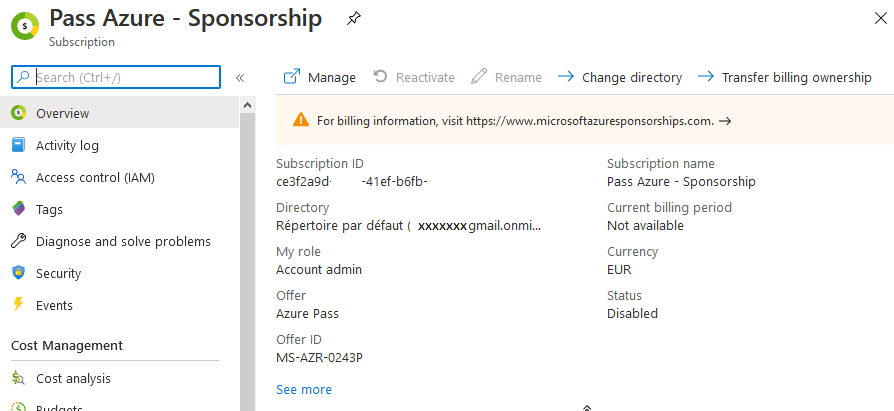Hello everyone,
As part of a 1-week Azure AZ-500 training, I received some trial subscription licence and credits.
Training included toying with many Azure features and notably enabling PIM (Privileged Identity Management).
My subscription was time limited but I took care of deleting and disabling everything I could without waiting for its deactivation. This means there are no Resource Groups left and nothing to manage/monitor except the account itself.
However, I am still getting "Your weekly PIM digest" e-mails (even if there's no resource or resource group left, PIM is still active - or tries to be -, it appears).
I have already searched internet/this site/Microsoft communities but with no success. As Azure is extremely powerful but also quite complex it's quite likely I have missed the right option.
Notably I've read those threads which are more or less about the same topic (deactivating PIM/PIM digests):
https://social.msdn.microsoft.com/Forums/en-US/dbe5114d-23b9-432f-816c-0498883f4ee3/azure-ad-pim-disableremove?forum=WindowsAzureAD
https://social.msdn.microsoft.com/Forums/en-US/eb8d1597-42e9-42d6-8735-fc1effe2a8bb/disable-weekly-digest?forum=ApplicationInsights
As my account is the global administrator (and single user left), I cannot remove it from any role
https://learn.microsoft.com/en-us/answers/questions/7074/azure-trial-finished-but-still-receiving-weekly-pi.html
This one seems extremely close to my own scenario.
The user is told to cancel his subscription - something I hadn't tried actually - but when I'm trying to reproduce the operations I don't have the Cancel Subscription or anything alike (or maybe I'm temporary blind / forgot my English)
Here's a screenshot of where I thought I'd find the option :

It's nothing tragic, I'm "just" getting 1 weekly email but I'd prefer to clean everything (without deleting my whole account that is).


